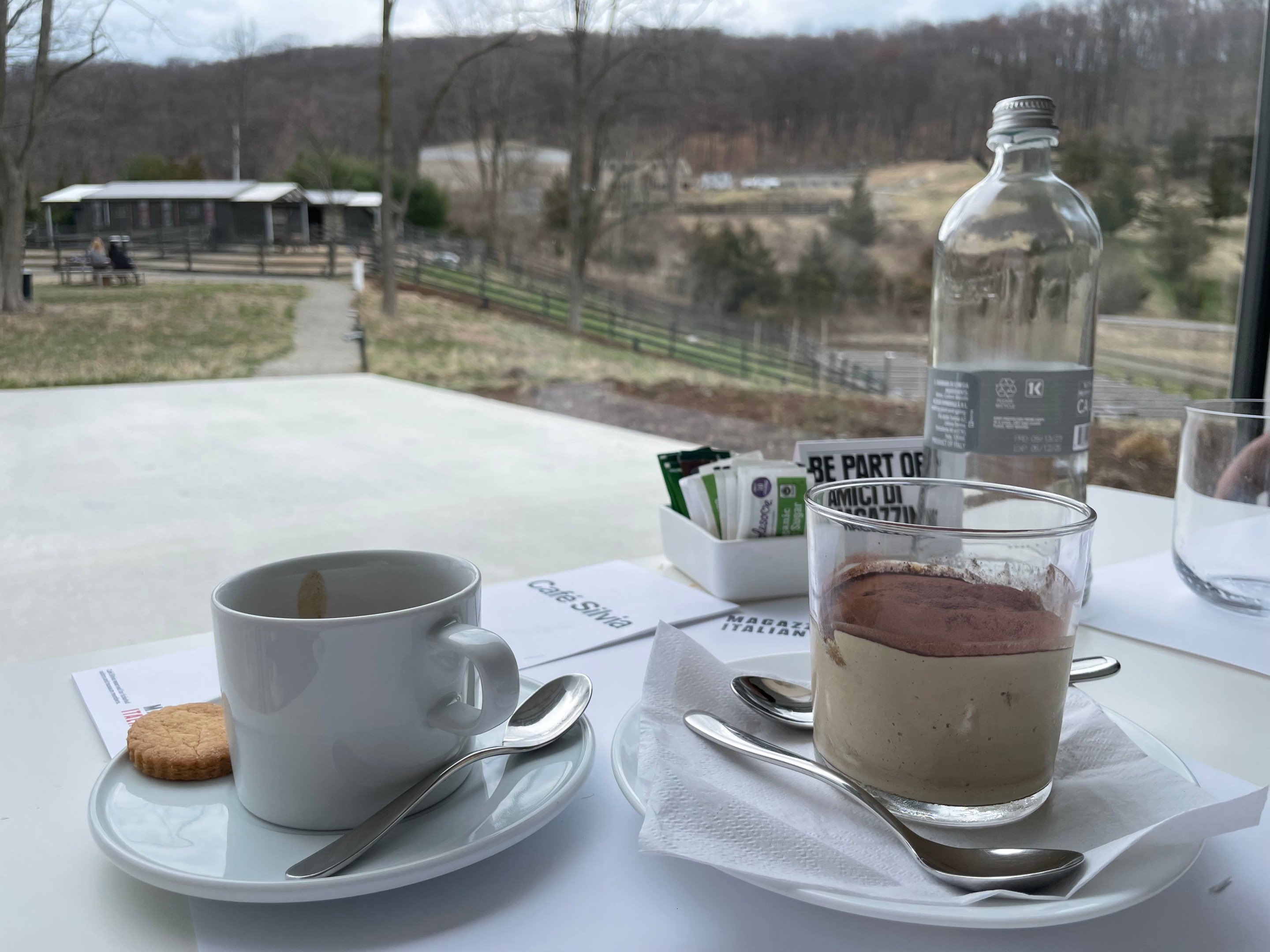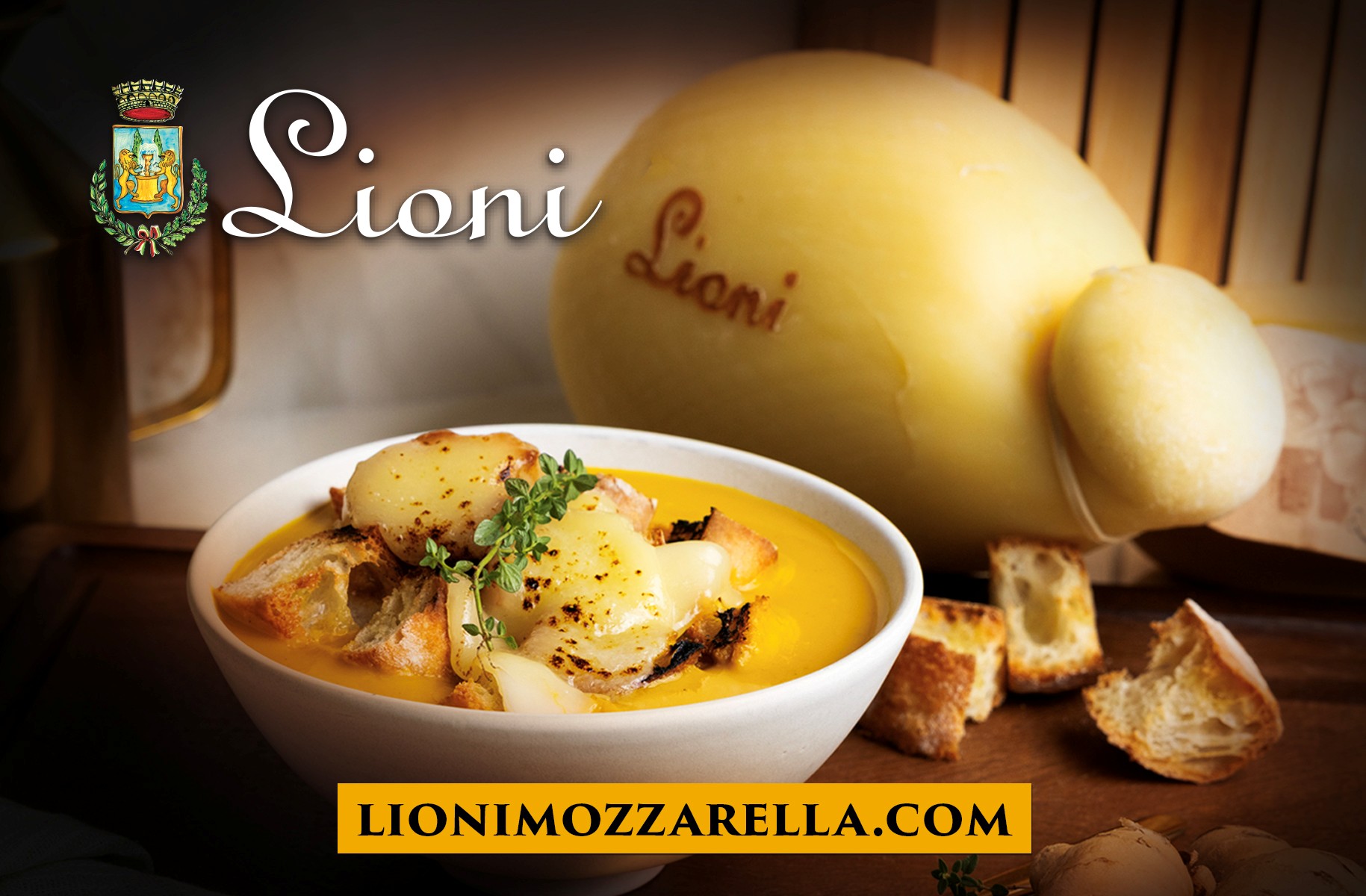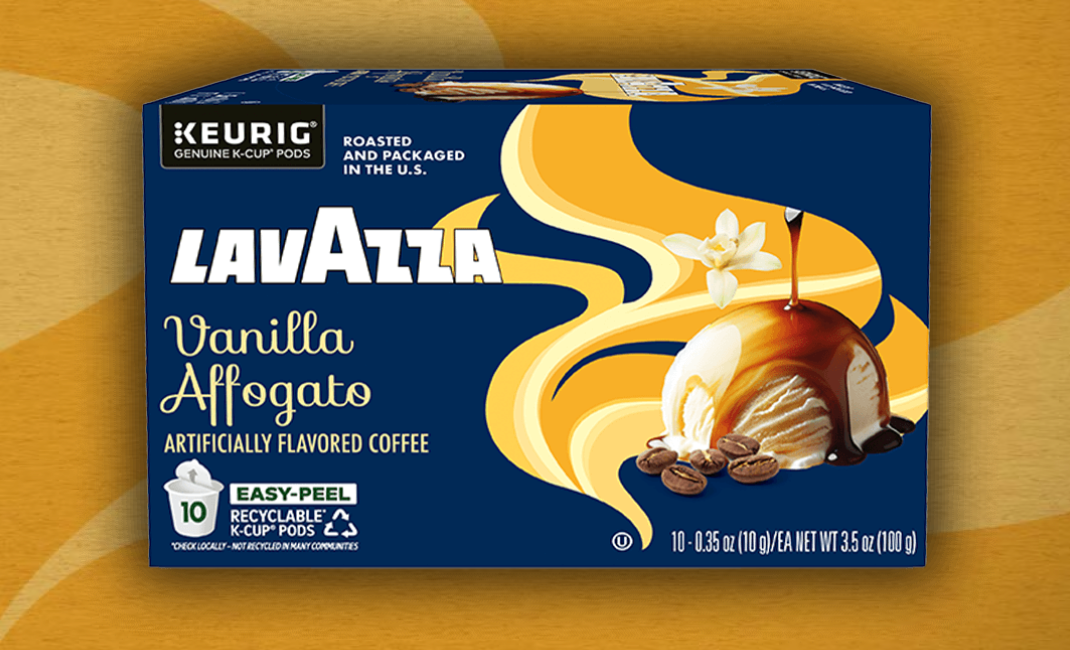Magazzino Italian Art, a museum and cultural hub just miles up the Hudson River from New York City, has among its many offerings a research center advancing public appreciation of postwar and contemporary Italian art, a thoughtfully designed corral that is home to 16 Sardinian donkeys, and Café Silvia, where Chef Luca Galli serves authentic, regional cuisine of the Italian peninsula and its islands.
There's a dialogue here between art, food, culture, and the environment that perhaps stems from the founder's tenet to embrace community, that permeates from the museum's grounds to the building's design to the programs, and finally, the kitchen.
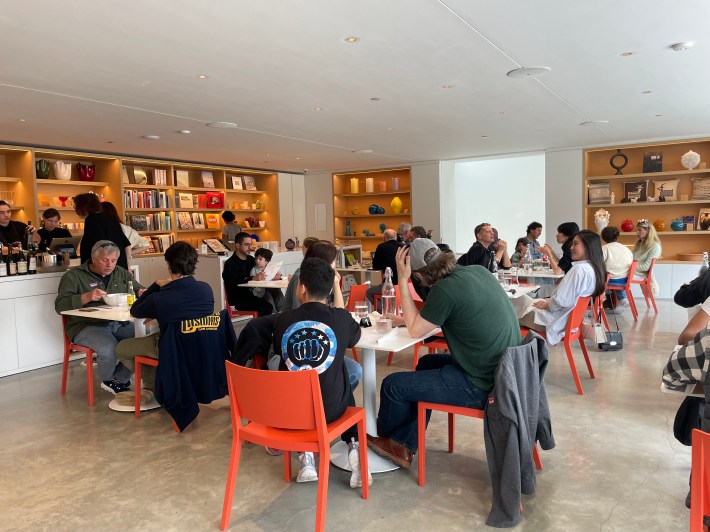
Chef Luca Galli pointed out, upon an introduction at our table, the beds in the garden that, as the weather will permit in due time, sprout arugula and asparagus, among other fresh herbs and vegetables. The farm-to-table concept here is not merely a marketing campaign to promote a lifestyle. The highly seasoned Chef Luca Galli is a brand of warmth and a welcoming presence among the ticketed visitors and museum members, luxuriating in an elegant dining experience amidst a casual setting.
The floor-to-ceiling windows in the cafe offer a reflection between our inner and outer landscapes, where over carefully prepared dishes - such as the Polpo arrostito with purea di ceci, olive taggiasche and scorza di limone - one can render consciousness to the things we unknowingly crave beyond food, that is, the arts, the culture, and the people.
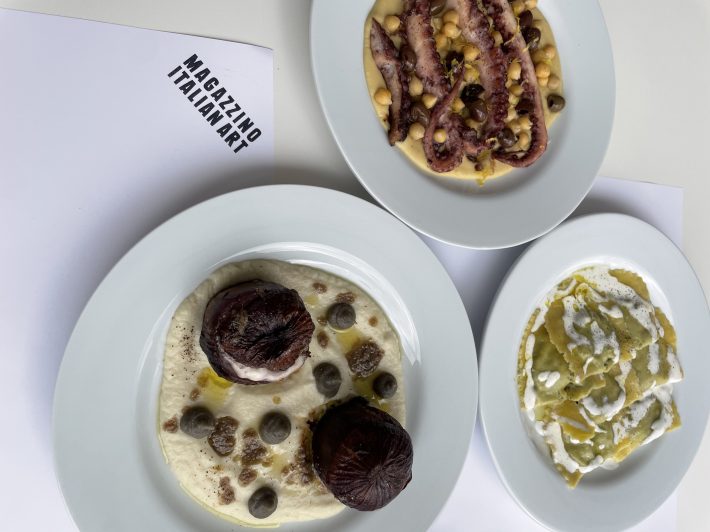
As the thread of interconnectedness weaves itself throughout Magazzino's Italian Art, I came across Maria Lai's work and grew curious about her life in her Sardinian village. It didn’t take long to become entirely enchanted by her work.
Maria Lai's exhibition, A Journey to America, is on display until July 28, 2025, in the Robert Olnick Pavilion. There’s also a short film, Legarsi alla Montagna, a collective performance staged in 1981 in Sardinia by Maria Lai.
An excerpt from the description of the film, by Tonino Casula, reads: “Maria Lai transformed the town into a living artwork, connecting its houses with ribbons that extended to the mountain above, symbolizing unity among people and harmony with nature.”
And then there is Lucio Pozzi, who, in a recent interview in the Brooklyn Rail for his show at Magazzino Italian Art, on display until June 23, 2025, shared his early NYC experience after he arrived from Italy, where he walked from 125th Street to Chinatown in search of an apartment. Years after living in the city, he made his way up the Hudson River and has been a long-time resident of the region. His presence, his work here, is partially, in conversation with the environment.
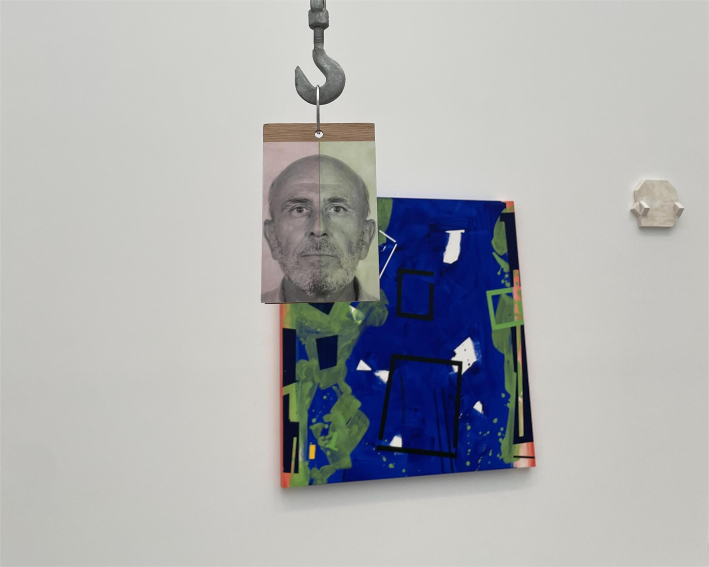
With no prior knowledge of Italian Arte Povera, I did some reading about the life of the artist Lucio Pozzi, that led me to his writings and his reputation for defying categorization, which I find compelling as I write about my adventures along the Hudson River, not as a food critic, not as an art critic, but as someone who is inspired by the minimalist Italian lifestyle and can on a whim, embark on a journey and suddenly have a story to tell, not just about the food on the table, but all the things around the table.
